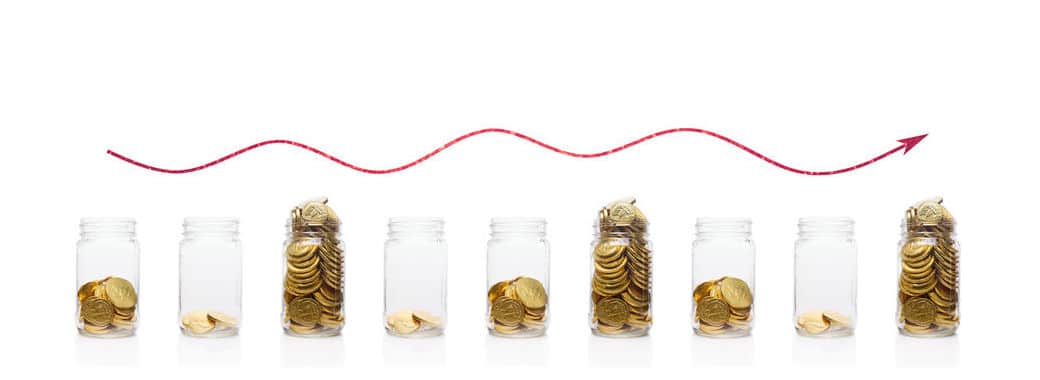Tips for Investing During a Volatile Market
Although economic instability is not directly connected to bear markets, a struggling economy and these unusual circumstances can cause fear that your accounts will lose money with market volatility.
The first casualty of a bear market is an investor’s ability to distinguish between temporary volatility and permanent loss. This means that your investments only suffer a permanent loss when you sell them out of fear or panic. For those who stay invested, however, history shows that equities or stocks consistently go up over the long-term.
What I want you to know is that this downturn will eventually end and it will probably happen sooner than you think. Since 1926, the S&P 500 has experienced 17 bear markets, or a fall of at least 20% from a previous peak, with an average length of about 10 months. Check out Dimensional Fund Advisors graphic demonstrating the power of investing long-term through bull and bear markets.
There are several reasons to embrace market volatility. Historical data shows that if you are appropriately invested in a diversified portfolio, you will end up with more wealth because of volatility. The more your investments jump around, the greater premium or return on your investments you can get, rather demand, for all those zigs and zags. Also, what is happening when the markets “go down.” Stock prices fall. So you are in essence buying stocks at a discounted rate. Then when the markets rebound, and they always have, you experience that much more growth.
The best strategy for ensuring long-term growth of your investment accounts during the inevitable ups and downs of the market is to sit tight and maintain your diversified portfolio that we’re managing closely for you. Here are a few more things that you can do to build wealth during volatile markets.
Invest Excess Cash
Extra cash can be used toward meeting long-term goals by investing a lump sum during a market decline. As described with dollar-cost averaging, it has the advantage of buying more shares of a fund while they are essentially on sale.
Try a Roth Conversion
Another way to accelerate growth as a result of a bear market is by making a Roth conversion. A Roth conversion refers to taking all or part of the balance of an existing traditional IRA and moving it into a Roth IRA. This taxable event has the benefit of lowering your taxes in the future, providing income flexibility during retirement, and leaving heirs a tax-free inheritance.
Bear in mind that Roth Conversions are a taxable event and they are not the right fit for everyone. Residents in high tax states, for example, may not benefit as greatly from this strategy as residents in low-tax states. It completely depends on your personal situation, where you live, and where you plan to retire.
Dollar Cost Averaging is always a good idea
This is when you make regular monthly or bi-weekly contributions to your diversified investment accounts. It is a powerful wealth-creating tool that relieves you from having to “time” markets to improve investor returns. By investing the same dollar amount every month, you buy larger and larger numbers of fund shares when the market declines. In other words, you buy more and more aggressively as share prices get cheaper and cheaper. Conversely, when markets rise again, your same monthly contribution buys fewer and fewer shares as they become higher priced. The process results in optimal timing, leading to above-average returns.
